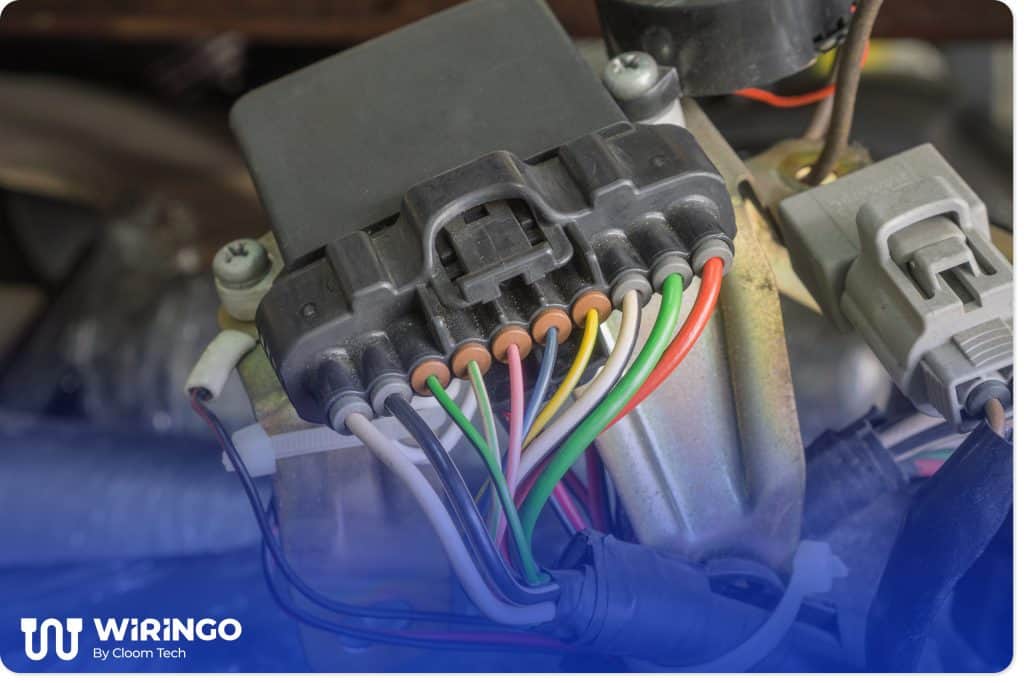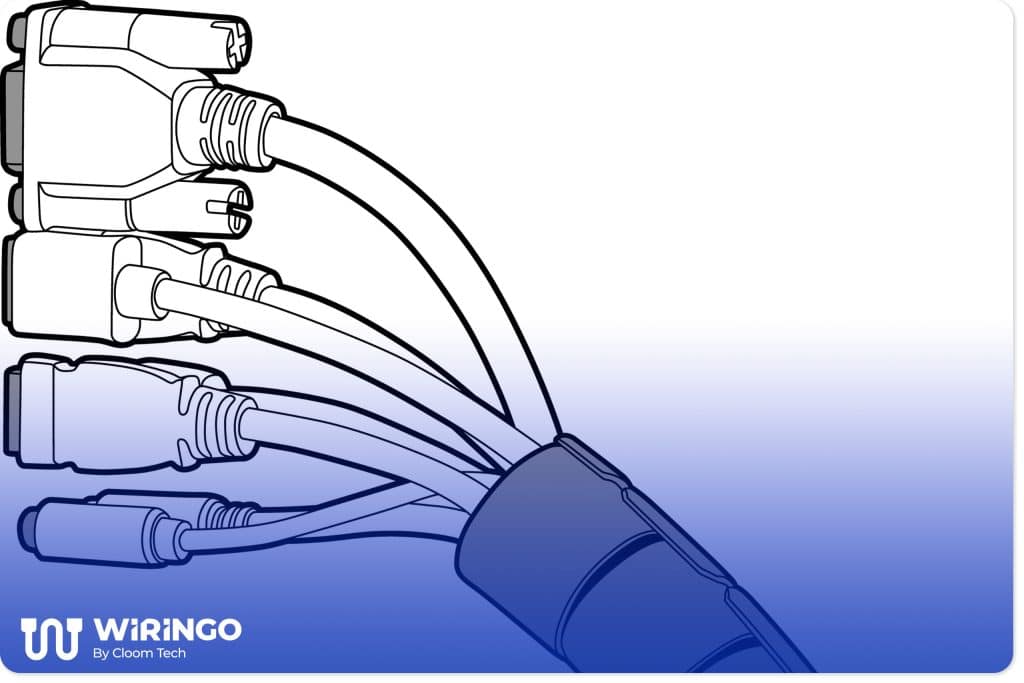The wire harness is critical in electrical systems as it transmits signals and power between the components. It also ensures reliable functioning and organizes and protects the entire system. Thus, all manufacturers need meticulously designed wire harnesses that provide optimal performance, meet specific requirements, and minimize the risk of system failure.
So, what do manufacturers need to consider while designing?
Get Your Free Sample!
Explore our custom services now. Email us at [email protected] for more details.
Materials, Components, and Selection Criteria
While designing and selecting the wire harness components, such as wires, cables, connectors, and other components, manufacturers must take into account different factors, including:
- electrical requirements of the electrical systems,
- expected exposure to mechanical stress,
- operational temperature,
- environmental exposure,
- safety standards,
- size and weight specific to the applications,
- durability and reliability.
Wires:
Wires and cables are made from copper or aluminum. The correct wires and cables ensure the efficient transmission of electric power and signals.
To ensure efficient current flow and heat dissipation, picking the correct right wire material with the right gauge is essential.
Most commonly, copper is used as a wire material due to its high conductivity and less resistance. On the other hand, aluminum is lighter. With less conductive nature, it leads to high heat dissipation.
Apart from materials, wires also differ in their gauge. Gauge is mainly a measure of the wire thickness. Wires with lower gauge numbers are thicker and have low resistance. Such wires allow more current to flow with less voltage drop. On the contrary, thinner wires with higher gauges have higher resistance and restrict the current flow.
Connectors
Connectors help join wires and cables to devices, while terminals are the wire ends that connect to other components or connectors.
The contact point in connectors ensures that the current flows smoothly without interruption. Loosely connected connectors may lead to short circuits or power loss.
Connectors complete an electrical circuit and allow easy assembly and disassembly of circuits. Also, they ensure stable connections between different wires and cables to withstand mechanical vibrations.
With connectors playing such an important role, manufacturers need to select connectors based on the electrical and mechanical properties of the system. The wire gauge, material, and length also influence the type of connectors to be chosen.
Casings and Insulation
Casing and insulation include shrink tubing, ties, sleeving, over-molding, etc. They are used on wires and cables for enhanced protection against temperature, pressure, and moisture.
Incorporating different wire insulations and casings improves the durability and performance of the harness. Here are the different casings and insulation used:
Corrugated tubes:
- Made from Polypropylene (PP) or Polyamide (PA)
- High-temperature resistance ranging between -40-150℃
- Wear resistance
PVC pipes:
- Higher flexibility
- Resistance to bending deformation
- Used at the branch of the harness to allow smooth transition of wires
- Heat resistance is not too high (below 80 degrees Celsius)
Tape:
- It comes in different forms, including:
| Tape types | Features |
| PVC tape | good abrasion resistance, flame retardant, temperature resistance around 80 degrees Celsius, cheaper |
| Flannel tape | made from PET, best wrapping, noise reduction properties, temperature resistance around 105 °C |
| Cloth tape | made from PET, beat wear resistance temperature resistance up to 150 °C, flame retardance not good |
- Offers insulation
- Wear resistant
- Flame retardant
Shrink tubing
- Connectors with proper sealing and insulation protect the electrical connections from dust, dirt, moisture, and extreme temperatures, ensuring long-term electrical connectivity.
Strain-relief components
- Components such as grommets, cable clamps, or cable ties protect your wire harness assemblies. In the wire harness, strain relief components should be placed at the points where the wires exit the wire harness, as these are usually the most vulnerable points.
Waterproof castings
- For waterproof castings, silicone or rubber tubes keep the wires dry in wet conditions with good resistance and flexibility.
Custom Configurations
Apart from all these major components, manufacturers customize the harnesses by specifying optimal routing, layouts, lengths, and protective components, such as relays or fuse, to make them perfectly suitable for the intended use.

Tools and Technology Driving Modern Wire Harness Design
Let’s explore the different tools and technologies driving the design of modern wire harnesses.
Software Solutions
Advanced software solutions like Computer-Aided design have revolutionized the design of wire harnesses. The contemporary CAD software enables real-time collaboration, multi-dimensional modeling, and seamless integration with simulation.
With advanced wire harness design software like Autodesk AutoCAD, Creo, SolidWorks, and Inventor, manufacturers can create robust designs in 2D and 3D so that engineers can create a detailed wire harness layout, optimize custom cable assemblies and run stress analyses, reducing the chances of errors.
Automation in Manufacturing
Automation in the manufacturing of wire harnesses has enabled higher precision, speed, and efficiency in the process.
Nowadays, wires are cut and stripped using automatic machines, reducing manual labor and enhancing accuracy. Similarly, there are automated assembly systems that assemble wires, cables, connectors, terminals, and other components, making the process fast, reliable, and accurate. Further, data analysis and performance monitoring is another automated process with which manufacturers streamline production and improve overall efficiency.
Testing Equipment
Advanced testing equipment helps manufacturers design harnesses with specific standards.
There are multimeters and continuity testers that test the electrical integrity of the harness, ensuring that there are shorts, opens, or miswirings. Besides this, manufacturers use environmental simulation chambers wherein they put harnesses under extreme conditions, such as vibrations, voltage fluctuations, extremely high temperatures, etc., to ensure performance and durability in real-world conditions.
Technology plays a vital role in minimizing design errors and repair costs. As a result, there are significant cost and time savings, helping manufacturers focus on improving productivity and profitability.
Get Your Free Sample!
Explore our custom services now. Email us at [email protected] for more details.
The Design Process: From Concept to Finished Product
The design of wire harnesses involves a number of steps. At every step, manufacturers ensure high precision, reliability, and efficiency so that the final product meets exact specifications.
Planning Stage
What is wire harness design? It is about what you need your wire harness design to do.
During the planning stage, manufacturers define key specifications (electrical signals, voltage, and power), requirements (on connectors, wire types, and wire lengths), and specific application needs(heat, pressure, EMI).
When the manufacturers clearly understand the application, they can create electronic drawings for longevity, reliability, and efficient installation.
Prototyping
Once the drawings are ready, manufacturers move ahead for prototyping.
For this, proper documentation including a Bill of Materials, Assembly Instructions, and Testing Procedures is prepared. All this is done to ensure that the prototype meets all design specifications, reducing costly rework and smoother production ramp-up.
During prototype building, manufacturers, designers, and engineers leverage their diverse expertise for early validation.
Validation and Testing
To validate the prototype for large-scale production, it has to undergo several testing procedures with utmost care and patience. The testing is done to check
- The integrity of electrical connections
- Measure resistance
- Intermittent connections
Customizing Wire Harnesses for Industry Needs
To fulfill the needs of different industries, manufacturers create customizable, durable, and efficient harnesses tailored to specific industry needs.
- Automotive: Need harnesses designed for high temperatures and high vibration conditions.
- Electronics: Require miniature harnesses with higher flexibility to fit in tight spaces and compact structures.
- Robotics and Industrial Automation: Need scalable designs to handle heavy-duty usage, durable to withstand repetitive motion.
- Aerospace: Require lightweight, heat-resistant harnesses for efficient performance in extreme conditions.
- Energy and renewable: Need high-voltage harnesses designed to keep safety and efficiency, easy maintenance.

Future-Proofing Wire Harnesses for Changing Demands
Industries are evolving, and so should the electrical wire harness design. However, there are many challenges. Manufacturers need to remain updated with new trends to drive innovation.
Miniaturization Trends
As electrical devices and equipment are becoming compact and space-efficient, harnesses need to follow suit. Therefore, there is a growing trend for miniature and lightweight components to drive innovative solutions in product design optimization.
Manufacturers are introducing harnesses with modular designs, flexibility, and small connectors.
Sustainability in Design
There is a growing emphasis on sustainability. So, the wire harness design can employ recyclable materials, eco-friendly components, and energy-efficient designs to stay in the future.
These component selection and design changes minimize environmental impact and meet all regulatory standards.
Industry Innovations
It is clear that wire harnesses will be an integral part of IoT-driven systems, from automatic vehicles to smart cities. Wire harnesses must also adapt to this to allow real-time transmission, automation, and increased connectivity.
Designers need to add more sensors and connectors while maintaining signal integrity.
Wire Harness Design with Wiringo
Undoubtedly, customized wire harness designs are essential to create reliable and efficient solutions to meet the growing demands of industries. Wiringo excels in delivering high-quality custom wire harnesses using innovative design processes, ensuring optimal performance and durability. With over a decade of experience, we create bespoke solutions tailored to your unique requirements.
Choose Wiringo as your wire harness manufacturing partner for cutting-edge wire harness solutions.
Hommer Zhao
Hommer Zhao serves as Director of Wiringo, leveraging a wealth of expertise in custom wire harness and cable assembly.
Drawing on more than a decade of hands-on expertise in the electronics field, Hommer focuses on wire harness manufacturing, custom cable assembly, and expedited restricted product production. His operations include a pair of wire harness production facilities and two dedicated PCB manufacturing & PCBA sites, all strategically located across Shijiazhuang, Shenzhen, Jiangmen, and the Philippines.
Hommer frequently refers to resources like Wiring Harness News for up-to-date insights and methods related to wire harness production.
Beyond his research and reading, Hommer also contributes to the Wiring Harness Manufacturer’s Association (WHMA), which offers invaluable resources and professional guidelines to wire harness specialists.
Get Your Free Sample!
Explore our custom services now. Email us at [email protected] for more details.



